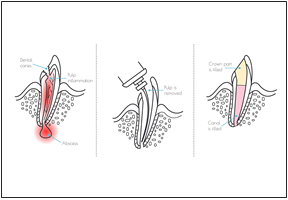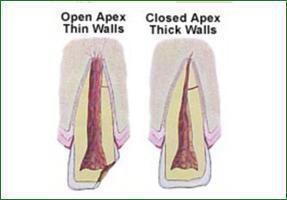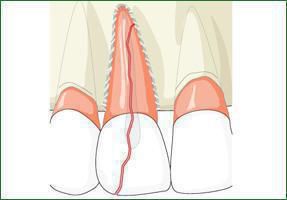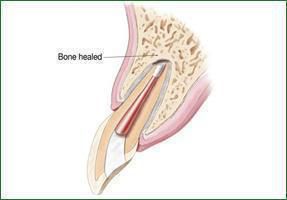Retreatment
With proper oral hygiene and good oral care practices, teeth that had undergone endodontic treatment will usually last long like other natural teeth. However, in rare cases, root canal therapy may fail to work as expected. The tooth that has already received a root canal treatment may fail to heal, or the patient may experience post-surgical complications that jeopardize the tooth, or the pain may continue to persist. In such cases, endodontic retreatment may be needed.
The root canal retreatment process is almost identical to the original procedure. It involves the removal of the previous crown and packing material, the cleansing of the root canals, and the re-packing and re-crowning of the tooth.
A root canal retreatment's success rate is almost 75% and is a better alternative than tooth extraction for most individuals. Also, the root canal retreatment is less expensive than the restorative dentistry options like dental implants, extensive bridgework, or the creation of aesthetically prosthetic teeth that may be required after tooth extraction. A root canal treatment's success rate is high if the tooth has good bone support, a solid surface, and healthy gums beneath it.
The reasons why root canal therapy may unexpectedly fails include:
- Cracked crown leaking filling material.
- Curved or narrow canals that were not treated during the initial procedure.
- Delay in the placement of restorative devices after the procedure.
- New decay to the tooth re-exposing root canal filling material, causing infection..
- New fracture in the treated tooth.
- Saliva entering the restorative structure.
- Complicated canal structures that went undetected during the initial procedure.
What does root canal retreatment involve?
During the retreatment procedure, a local anesthetic will be administered to the patient. The affected tooth is then isolated with a rubber dam to protect it during the treatment from bacteria and saliva. As the next step, the tooth is reopened for access to the root canal filling material. If a crown and post have been placed, these will also be removed. After this, the previous root canal filling material is removed, and canals are cleaned and examined.
Once the dentist is sure that the root canals are completely clean, the tooth is again filled with cutting edge biocompatible filling material to prevent bacterial invasion. As the last step, a temporary crown or filling is applied. During the next visit, the color-matched permanent crown will be placed.
Schedule an appointment with us for your queries on endodontic retreatment procedures by calling our office, and we shall guide you further.




